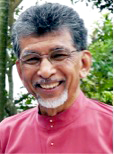 |
 |
The Malaysian Culture Group welcomed eminent architect and urban planner Dato’ Ar. Haji Hajeedar Abd. Majid on October 7th. Born and bred in pre-independence Malaysia, in the city of Kuala Lumpur, Dato’Ar.Haji Hajeedar Abd. Majid studied architecture in the UK with a specialization in Urban Studies and Conservation at the Portsmouth Polytechnic in the early 1970’s. On his return to Malaysia, he joined the Urban Development Authority (UDA) as an architect and went on to become Deputy Director of the organization. |
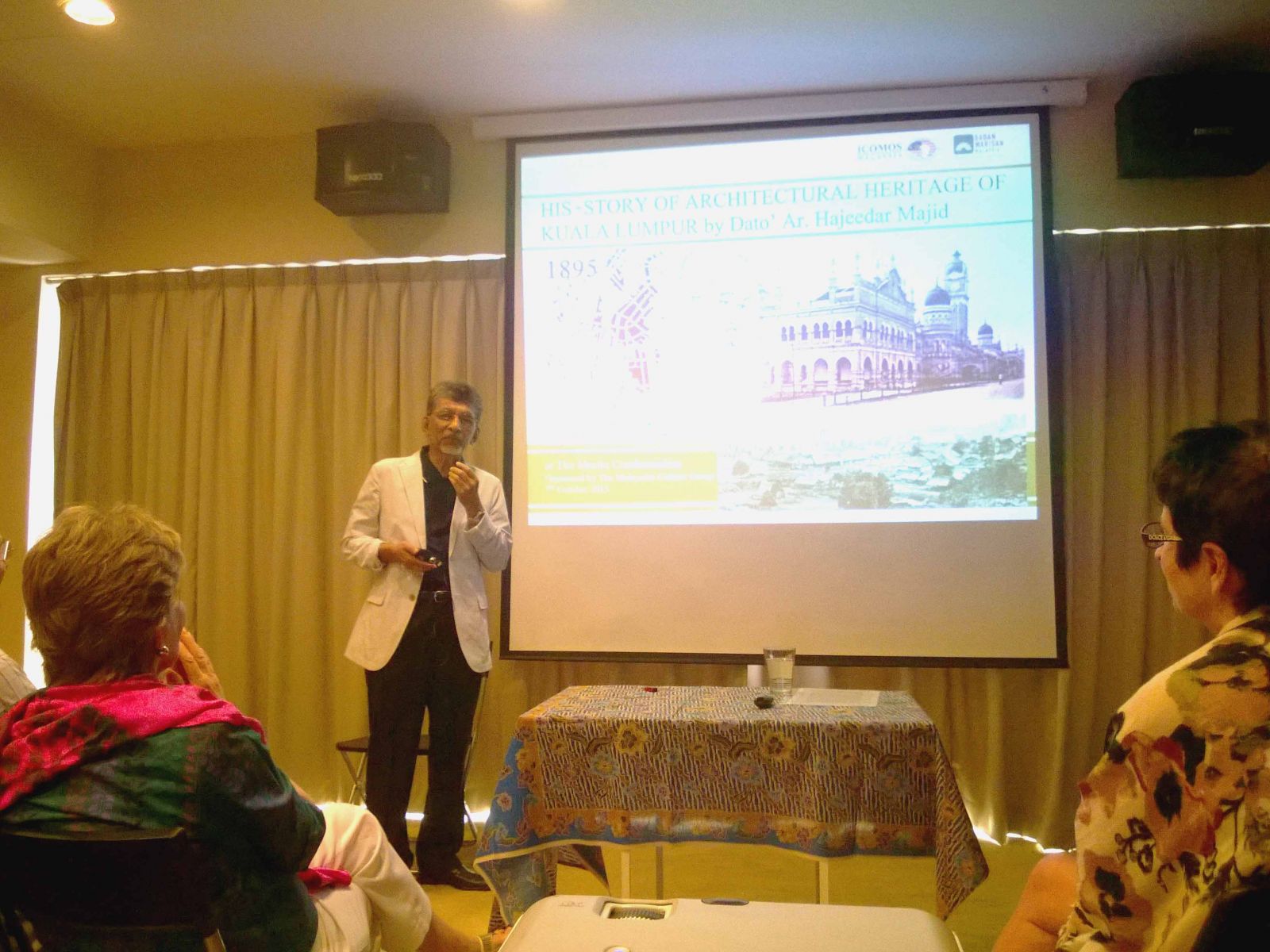 |
His outstanding contribution to the body earned him many awards including the Ahli Mangku Negara and the Certificate of City Planning from the Japanese government. In 1978, Dato’ Ar. Haji Hajeedar founded his successful architectural firm, Hajeedar and Associates Sdn. The firm has worked on numerous commercial and conservative and restorative projects. Its portfolio features several high-profile projects such as the Ampang-Kuala Lumpur Elevated Highway, office towers for Development Bank, MNI Twin Tower and various religious buildings like the Abu Bakar As-Siddiq Mosque in Bangsar. |
|
|
Dato’ Ar. Haji Hajeedar is also an extremely active member of the Institute of Malaysian architects and is currently involved in the restoration of the Empire hotel, a stunning building which has housed the Pertubuhan Arkitek Malaysia since 1973 . He has continued to be involved in the planning and development of Kuala Lumpur city by serving as an architect advisor to Kuala Lumpur City Hall and as a member of the Advisory Council of Natural Culture. A passionate conservationist, who has a deep appreciation for the many historic edifices that dot the city of Kuala Lumpur, Dato’ Ar. Haji Hajeedar is also the founder of the Conservation chapter of the Kuala Lumpur Structure Plan. His various conservation and restorative efforts include the restoration of the Industrial Courts, the Kuala Lumpur Museum and the restoration and reinvention of a colonial residence into the boutique hotel Carcosa Seri Negara amongst many others. |
|
The restorative works for the last mentioned building were undertaken for the CHOGM conference and the Queen’s visit in 1989. That Dato’ Ar. Haji Hajeedar is a passionate about his home city was immediately evident as soon as President Alexius handed him the mike. He then immediately proceeded to take us into back into time. |
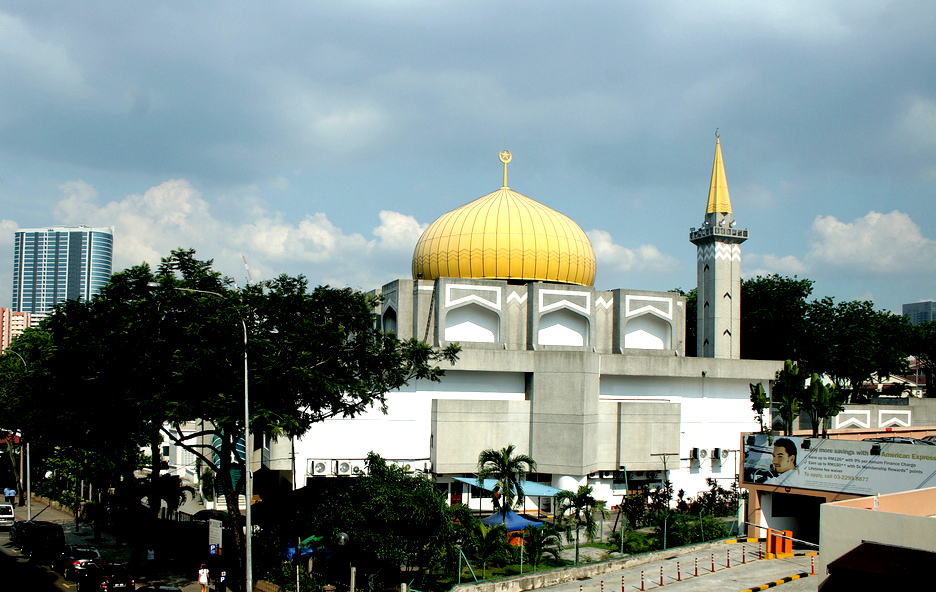 |
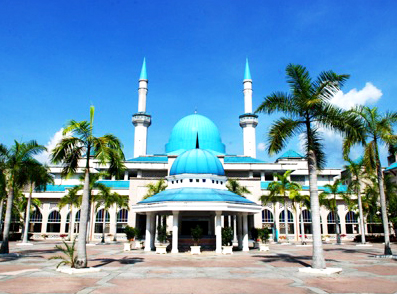 |
|
To a time when this bustling metropolis of Kuala Lumpur was a remote backwater or 'a sleepy hollow' located at the muddy confluence of two rivers, the Sungei Klang, and the Sungei Gombak. The process of transformation of Qulla Lumpor or Muara Bustak Lumpor began in the mid-19th century around 1857. |
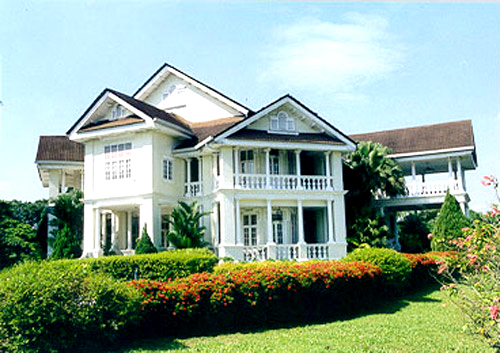 |
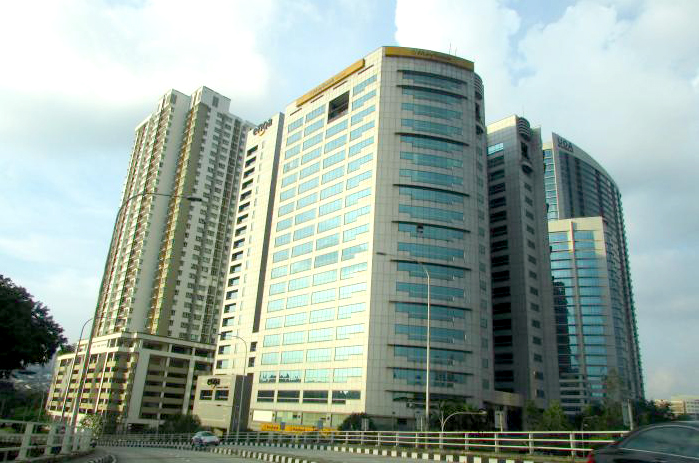 |
|
There is some ambiguity as to who was the founder of modern-day Kuala Lumpur. While some records state it was a Sultan of Selangor (Raja Abdullah), others say that it was Sutan Puasa, a Mandailing noble. One of these gentlemen invited Chinese prospectors to establish tin mines in the area. As the numbers of these tin-miners multiplied the Chinese formed gangs that brawled to control the mines. The sultan then appointed a leader of the Chinese community known as Kapitan China to bring in some discipline. The end of the 19th century was a tumultuous period for Kuala Lumpur as the city suffered the devastating effects of the Malay Civil War along with harrowing floods and fires. It was at this time the British Resident of Selangor; Frank Swettenham proposed a new urban plan that featured the transfer of the central government from Klang to Kuala Lumpur, and a new city came to be built. This new city featured buildings constructed from fire-resistant bricks produced in an area known as Brickfields, home to present day KL’s vibrant little India enclave. The first so appointed Kapitan China of Kuala Lumpur was Hiu Siew. However, it is Yap Ah Loy or the third appointed Kapitan China of Kuala Lumpur along with the Sultan, who is widely regarded to be one of the founding fathers of Kuala Lumpur.
So began the transformation of Kuala Lumpur from a ‘kampung’ (village) where the various communities lived in harmony to a modern metropolis populated by towering, glass, cement and steel high-rises. Various world events subsequently helped shape the evolution of Kuala Lumpur’s cityscape; these include the British Colonial rule, the Second World War and the Japanese Occupation and Merdeka or Independence from the British in 1957. As Kuala Lumpur was declared the capital Federation of Malaya in 1957, new structures came to be constructed. Hectic building activity ensued as stadia and buildings housing offices, banks, hotels, department stores and hospitals were built as the city’s growth and economic success created an enormous demand for commercial space. The city’s landmark attractions the sky-touching Petronas towers were also a feature of this construction frenzy, which has continued unabated until today and now includes the proliferation of countless luxury, high-rise residential buildings. Dato’ Ar. Haji Hajeedar acknowledges that the city needs to grow. |
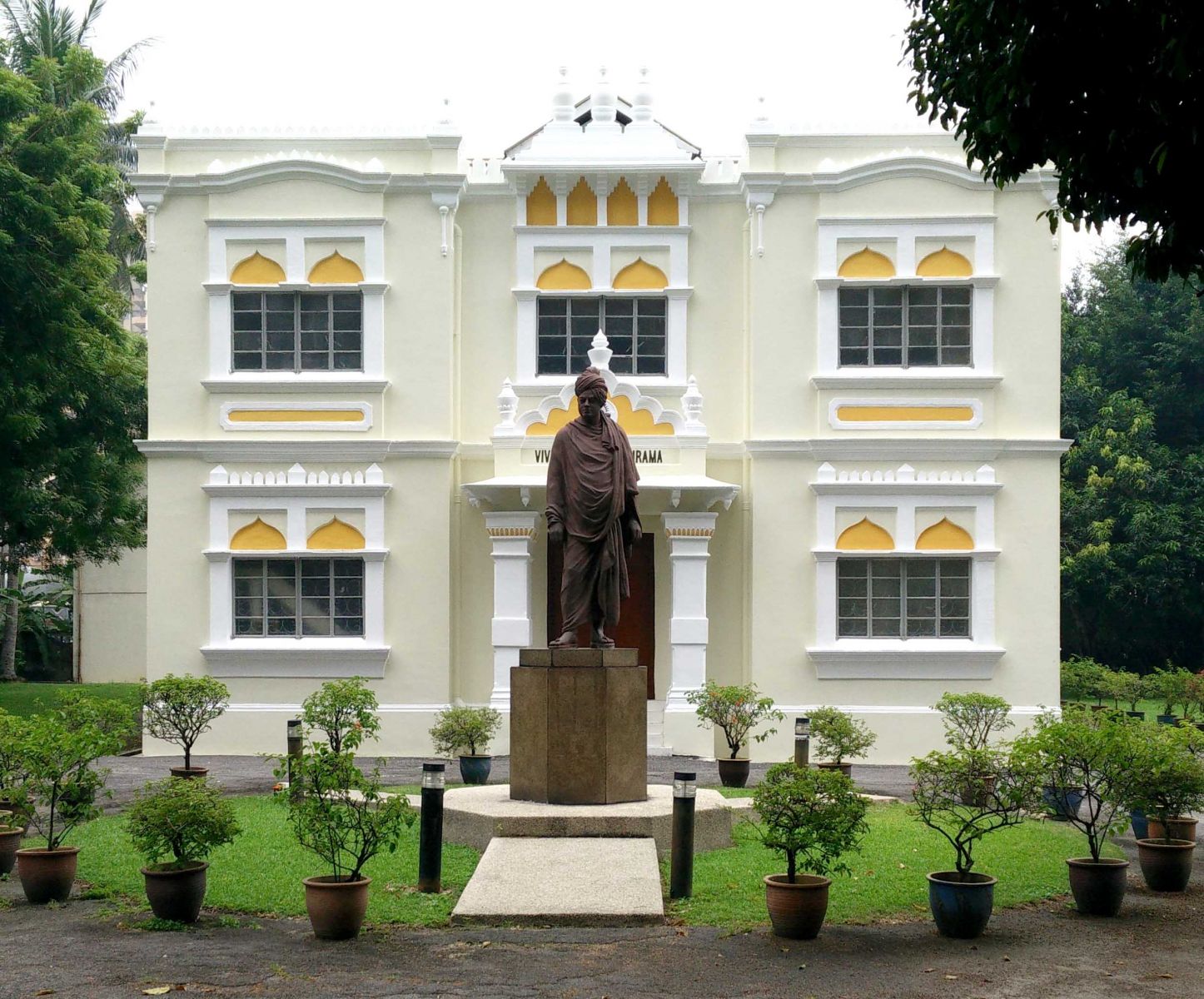 |
.jpg) |
However, he doesn’t think that this growth should be at the expense of Kuala Lumpur’s splendid historic structures, like the Chartered Bank building, which lost an entire wing for the expansion of Jalan Raja. The Chartered Bank and other historic edifices around Kuala Lumpur are the sole remnants of the city’s glorious past and should be thus, preserved and not thoughtlessly discarded. |
|
Moreover, if all these structures were torn down to make way for tall, glistening towers, Kuala Lumpur would lose its soul and become just one of the many sky-scraper decked cities that dot the globe. He adds such rapid development is rarely matched by a similar expansion in infrastructure and often leads to chaotic, haphazard development not unlike what we are witnessing in the city today. Dato’ Ar. Haji Hajeedar peppered his highly entertaining and enlightening talk with several personal anecdotes and musings as he used a presentation to highlight his lament, reflective of a quote attributed to British architect and urban planner, Graeme Shankland that ‘A City without old buildings is like a man without a memory.’ |
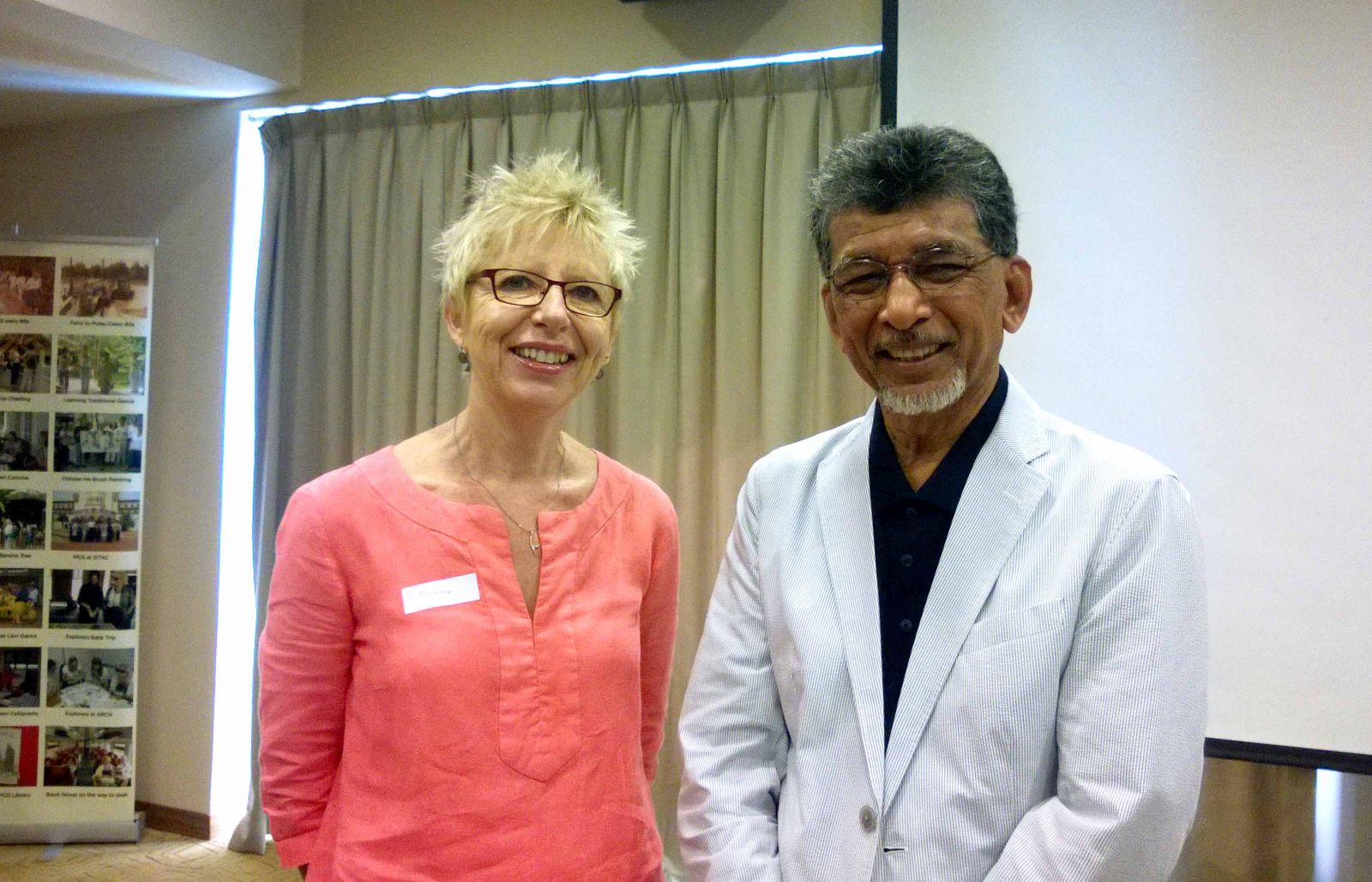 |
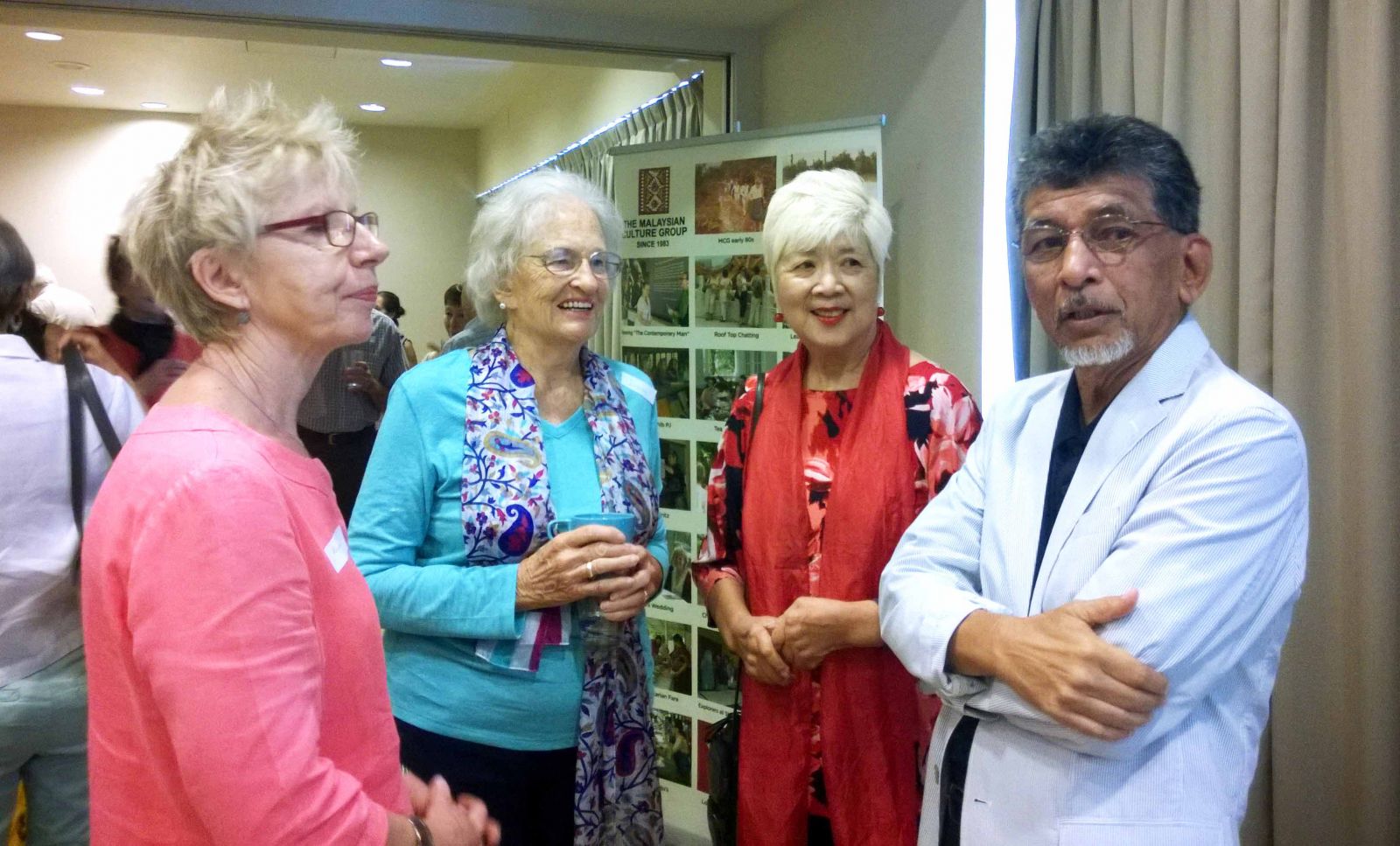 |
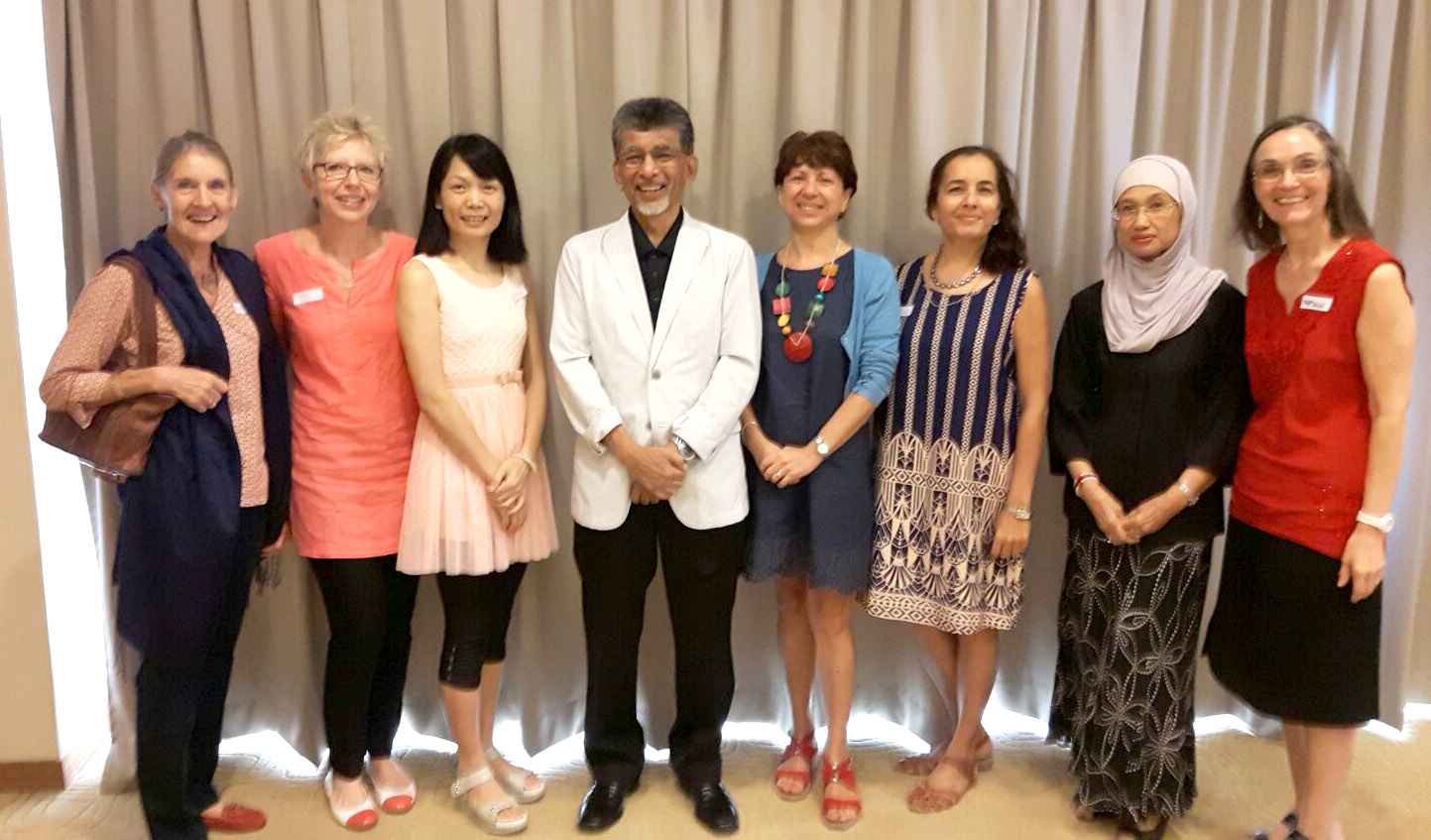 |
| Anjeeta Nayar |




